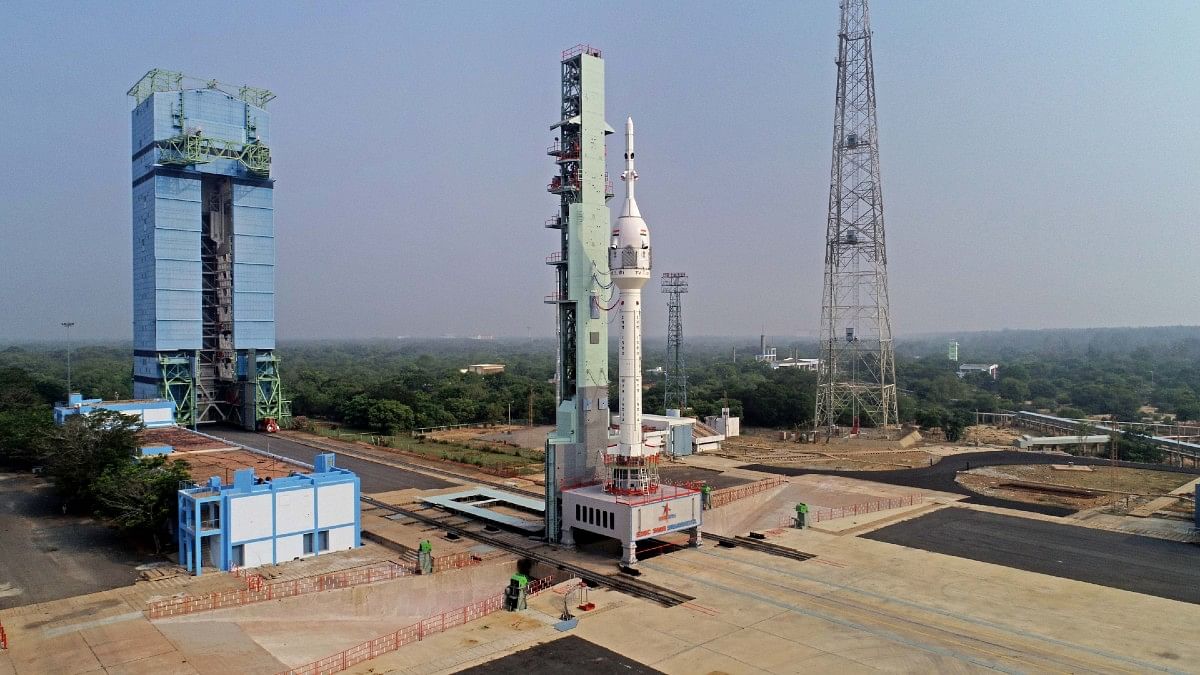New Delhi: The Indian Space Research Organisation (ISRO) is preparing for another important milestone of the Gaganyaan mission — India’s first human spaceflight. And the first integrated air drop test (IADT) is likely to happen by April end.
“It is likely to happen around 30 April,” ISRO chairperson S. Somanath told ThePrint Tuesday.
As part of the three-day Gaganyaan mission — expected to take flight in 2025 — three astronaut designates will be launched on a low-Earth orbit for 400 km and will be brought back safely to Earth.
ISRO will be carrying out a series of tests to ensure the safety of the crew module and to prepare for its safe recovery. For the first IADT, the crew module will be dropped from an Indian Air Force (IAF) helicopter from a height of around 4-5 km above ground level.
Senior officials from ISRO said that these tests will confirm the secure recovery of the crew module — where the astronauts will be housed — and ensure safe landing for the astronauts upon their return to Earth.
During the drop, first the stabiliser parachute will be separated, followed by the top cover of the module. The drogue chutes will then be deployed followed by the primary chutes, which will help the crew module make a controlled touchdown. These chutes will control the speed of the crew module at various levels and help it stabilise.
After the integrated air drop tests, the space agency will also be carrying out a series of test vehicle missions, pad abort tests (a trial run for its launch abort system) and two rounds of unmanned flights before the manned mission is finally launched. The unmanned tests are likely to happen by 2024 end.
“The year 2024 is going to be the year of Gaganyaan. Preparations are going on at a satisfactory rate. Unlike other missions, we have to be doubly sure of the safety of the missions,” Somanath had said earlier this year.
Also read: Special parachutes, cramped capsule — how Gaganyaan will take 3 astronauts to space & bring them back
Previous test
Four astronaut designates — Indian Air Force group captain Prasanth Balakrishnan Nair, group captain Ajit Krishnan, group captain Angad Pratap, and wing commander Shubhanshu Shukla — have been training extensively for the mission for the past five years in Russian and Indian facilities.
They were awarded the “Antriksh Yatri Pankh” (astronaut wings) by Prime Minister Narendra Modi in February. An extra member will be trained as a backup for a contingency situation, as in any human spaceflight.
Last year in October, ISRO had successfully launched the test vehicle development flight (TV-D1) as part of the Gaganyaan programme. This involved simulating an emergency situation to ensure the crew module could safely remove itself from the test vehicle and land in the sea.
The aim of the test flight was to demonstrate and evaluate the sub-systems of the test vehicle and crew escape exercise. Along with this, it also tested various separation systems of the crew module and the demonstration of deceleration systems at a higher altitude, and its recovery.
The liquid-propelled single-stage test vehicle, or TV-D1, uses a modified VIKAS engine with a crew module and crew escape system mounted at its fore-end.
(Edited by Zinnia Ray Chaudhuri)
Also read: Why does Gaganyaan crew have no women? History shows India has no excuses

